ALTERING THE DEBATE
REPORT OF THE WORKSHOP
ROBERT ROTHMAN
National Center on Education and the Economy
In recent years two reform movements have dramatically altered the debate about and, increasingly, the practice of mathematics education. One is the widespread consensus on the need to reform school mathematics, best expressed by the Mathematical Sciences Education Board's report Everybody Counts and the National Council of Teachers of Mathematics' Curriculum and Evaluation Standards for School Mathematics. These reports call for fundamental changes in teaching and learning so that all students, not just an elite group, develop mathematical power.
The other reform movement affecting mathematics education is the growing effort to strengthen the academic preparation of students who are preparing to enter the work force. Recognizing that three-fourths of young people enter the work force without a baccalaureate degree, reformers in this arena have focused on developing programs and structures to provide the skills and knowledge all young people need in an increasingly technological workplace. And because much of this knowledge and skill is mathematical, this movement has profound implications for what mathematics is taught and how it is learned.
Yet despite these implications, the two communities with most at stake—mathematics and technical educators—have had little opportunity to talk with one another and find a common ground. In an effort to begin such a dialogue, the Mathematical Sciences Education Board (MSEB) invited 40 representatives from schools, universities, two-year and four-year colleges, and businesses, representing a range of viewpoints, to a workshop in Washington, D.C. on November 18, 1994. The Workshop initiated a dialogue between the mathematics and technical education communities on appropriate mathematics education for the technical work force and what needs to happen to implement it.
Perhaps surprisingly, the Workshop produced strong agreement on the basic principle embodied by the NCTM Standards and Everybody Counts: that all students, regardless of their aspirations, need to learn a substantial core of mathematical content and skills. Participants adamantly opposed tracking systems that divide students into college-bound and work-bound programs, and expressed support for keeping all students ' options open as long as possible.
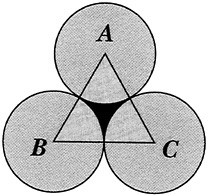
ROBERT ROTHMAN Robert Rothman is a Senior Associate at the National Alliance for Restructuring Education at the National Center on Education and the Eeonomy where he is responsible for writing articles, papers and other documents on national education reform. He is the author of several publications including Measuring Up: Standards, Assessment and School Reform and was the recipient of the American Psychological Association's National Psychology Award for Excellence in Newspaper Writing in 1992. The opinions expressed in this paper are those of the author and do not reflect those of the National Center on Education and the Economy.
Yet beneath this agreement lay a number of important philosophical and practical questions that the Workshop only began to address:
-
Although tracking by academic or career goal may be undesirable, is it appropriate to divide students according to ability or learning style? And once students have completed the core, how should their mathematics coursework diverge?
-
What should constitute the core curriculum all students need to master? Should it be based primarily on workplace applications, or are there elements of “pure” mathematics that remain essential? Who decides?
-
How can schools ensure that students' options remain open? At what point, if at all, does a particular pathway close off other options for a young person?
-
What is the role of schools, colleges and universities, businesses, and the public in creating the kind of mathematics program appropriate for all students?
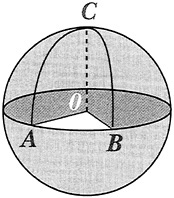
WE ARE DESIGNING A SYSTEM FOR THE FUTURE WHILE LIVING IN THE PRESENT, WITH A LOT OF PEOPLE TIED TO THE PAST.
– SHARI COSTON
In addition to raising these questions and offering possible solutions, participants also noted that the ideas they are proposing represent a profound change from the system that has existed for decades. In fact, noted Larry Rosenstock, executive director of the Rindge School for Technical Arts in Cambridge, Massachusetts, the debate over the balance between applied and academic learning dates back to John Dewey. (Dewey, who argued for an emphasis on learning based on experience and hands-on applications, lost.) As a result, reformers face substantial barriers in trying to change the system. As Shari Coston, executive director of the Arkansas Education Renewal Consortium, put it: “ We are designing a system for the future while living in the present, with a lot of people tied to the past.”
TRACKING
If there were one issue that united workshop participants, it was opposition to the system of dividing students into college-bound and non-college-bound tracks.
Most schools tend to sort students according to what they think students ' aspirations are and then provide at least two distinct courses of study. One includes algebra, geometry, trigonometry, and often calculus, leading to university-level mathematics. Another is tied to narrow job skills, like automobile mechanics and carpentry, and includes basic mathematics applicable to performing those skills. Disproportionately, low-income and minority students tend to end up in the latter track.
In many cases, tracking is a consequence of good intentions. It is designed to provide a curriculum appropriate for a student's future and to ensure that the instructional pace matches the student's abilities. However, workshop participants agreed that in practice tracking is harmful. Perhaps the biggest problem, they noted, is that the tracks are inexorable: once on one track, it is nearly impossible to move to another. “We are not in support of opting people out of any opportunity, ” said John Janty, a mathematics teacher at Waunakee High School in Madison, Wisconsin. “Tracking opts people out, and we are against it.”
Moreover, participants noted that tracking cheats those in both groups out of important mathematics they will need to be productive adults. Those in the technical track tend to learn relatively low-level mathematics, rather than more complex topics and skills that would enable them to move into higher-skilled occupations. “As long as we
have tech-prep, we are training an underclass,” said Clara F. Tolbert, special assistant to the superintendent of schools for the School District of Philadelphia.
At the same time, the abstract nature of the mathematics taught in the traditional college-bound track means that students in that track miss out on opportunities to apply mathematics to authentic problems. Research on learning has shown that such applications enhance student learning. Moreover, they also provide college-bound students with an opportunity to see the way mathematics is used in the “real world, ” something they will need to know eventually. Despite different labels, “Everyone will end up working,” said Arla Huber, a lecturer in mathematics at Pennsylvania State University at York.
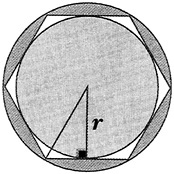
AS LONG AS WE HAVE TECH-PREP, WE ARE TRAINING AN UNDERCLASS.
– CLARA TOLBERT
Workshop participants observed that many nations offer a single mathematics program for all students. “In Australia,” noted Margaret Vickers, a project director at TERC, “we don't let anybody go. All of them get this [mathematics] like porridge in the morning until age 16.”
But while opposing separate curricula in this country, participants argued that schools could still differentiate among students according to abilities or interests. Schools should allow students to progress at different rates as long as they expect them to end up at the same place, participants noted. “It's socially a different thing to have 100 different things you need to be competent in and do at different rates than to have ‘dumb kids' and ‘smart kids,' the kind of divisions traditional tracking creates, ” said William Thomas, associate professor of technical science and mathematics at the University of Toledo Community and Technical College.
The key to such a system is expectations based on proficiency rather than age. Pamela E. Matthews, associate dean in the mathematics division of Mt. Hood Community College, reported that the state of Oregon has created such a system. It has established four levels of mathematical knowledge and skills, and requires all students to get through level three. Students who work at a faster pace can take college-level mathematics while in high school, while students who need more time may not reach the third level until college.
Another type of tracking that appears appropriate is a differentiated curriculum beyond the core expected for all students. But here, too, participants called for a substantial change from the current system. In place of the metaphor of “tracks,” which suggests two paths that never cross, participants offered a different image: a tree, in which the trunk represents the core for all students and the branches represent the paths available to them after mastering the core. The branches could include the specialized, theoretical mathematics of four-year college work (e.g., for engineering, pharmacy) and the applied mathematics of technical training (e.g., computer repair, paralegal, social work). In this model, participants saw students as “squirrels,” climbing along the branches and jumping from branch to branch. Thus a major challenge in designing such a system, participants noted, is providing students with the opportunity to jump across branches.
Yet, participants suggested that we may not know enough to build such a tree. “We don't know at what point you can branch off and still end up at the same place,” said Shari Coston.

THE TYPE OF PROBLEM-SOLVING THE WORKPLACE DEMANDS AND SCHOOLS SHOULD EMPHASIZE IS DIFFERENT FROM THE TYPE MANY SCHOOLS NOW TEACH.
– WILLIAM THOMAS
CORE CURRICULUM
If, as participants agreed, all students should learn a common core of mathematics, then the question that immediately follows is: What should that mathematics be?
Most participants argued that the curriculum should differ significantly from that found in most classrooms today. At least until very recently, when the NCTM Standards outlined a new vision, university mathematics departments tended to call the shots for the precollegiate curriculum. Yet the type of mathematics nearly all students need to know is quite different from the abstract mathematics the university-oriented curriculum has tended to emphasize.
“Schools are driven by one conductor: the university,” said Tony Q. Martinez, mathematics department chair at Leander High School in Leander, Texas. “In fact the real conductor should be employers. If school is a factory, who is it producing for? It is producing for the local economy. But schools are run for the local universities. The world is upside down in many respects.”
As an example of misplaced priorities, several workshop participants pointed out that the high school mathematics program typically points toward calculus and specifically the calculus of exponential and trigonometric functions, when such content is irrelevant for the vast majority of students. In fact, noted John (Spud) Bradley of the National Science Foundation, a large percentage of students take calculus in high school solely to avoid the subject in college.
In place of the traditional content, participants argued, schools should stress the kind of mathematical problem-solving and communication emphasized in the NCTM Standards. Such abilities are critical in the workplace, noted William Jensen, director of Delaware-based Rodel, Inc. “Young people coming into the work force have got to have a second language—the language of mathematics,” he said. “If you have that language, you can do that unique, painful thing called thinking.”
The type of problem-solving the workplace demands and schools should emphasize is different from the type many schools now teach, noted William Thomas. “Typically, when students are given a problem, it 's obvious what type of operation they should use to solve the problem, ” he said. What schools should focus on is the ability to formulate problems and determine what operations are appropriate to solve them. Ideally, those problems should illustrate the kind of tasks (e.g., scheduling and budgeting) that employers will expect their workers to perform.
Such abilities are essential for all students, especially for those heading into technical careers. For that reason, the conventional tech-prep curriculum focusing on routine skills is just as inappropriate as the college-bound curriculum. “Even in manufacturing, the use of information and the ability to process it demands a different set of skills than my dad used in the mill,” said Mary Jane Clancy, coordinator of the Education for Employment Office of the School District of Philadelphia.
Hyman Bass, professor of mathematics at Columbia University and chairman of the MSEB, cautioned against throwing out all abstract mathematical concepts from the curriculum. Certain mathematical
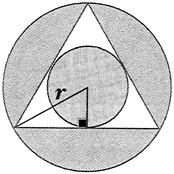
WE NEED TO RECOGNIZE WHAT MATHEMATICS WE HAVE DEPRIVED PART OF THE POPULATION OF IN THE RUSH TO PREPARE THEM FOR CALCULUS.
– WILLIAM NAHEMOW
concepts (such as proof) are essential to habits of mind (such as conviction and validation) that we want to instill in all students. However, he added, “given the way proofs are generally taught, I can sympathize with the argument for scrapping them from the curriculum. ”
In addition to suggesting changes in content, workshop participants also argued for a substantial revision in pedagogy in school mathematics. Too often, they suggested, mathematics is taught in an abstract fashion, divorced from the way it applies to the real world.
The abstract pedagogy of traditional mathematics coursework does students a disservice, participants argued. As cognitive science has shown, students who learn concepts in the context of their use are more apt to remember them and better able to apply them to other contexts. A student who understands the value of using trigonometric functions in calculating the height of a tree is more likely to understand such functions than a student who studies them almost as a foreign language.
In addition, teaching mathematics through real-world problems also provides some knowledge and skills that are essential but difficult to teach abstractly. For example, suggested Martin Nahemow of the Learning Research and Development Center at the University of Pittsburgh, there is a body of knowledge engineers should know—such as the structure of a curved staircase—that is taught not to engineers but to carpenters. “We need to recognize what mathematics we have deprived part of the population of in the rush to prepare them for calculus,” he said.
Participants offered a number of contexts for presenting mathematical concepts. In a vivid example, Pamela Matthews tore a piece of paper in half and stacked the pieces. She asked, “How many times must I tear and stack this paper so that I have a stack of pieces that equals the height of a 15-year-old girl?” Such a problem, she noted, involves data collection to determine the height of a girl and the concept of exponential growth to determine the height of the stack.
Others noted that technology makes it easier to bring the real world into the classroom. Through computers, videos, and CD-ROMs, teachers can employ actual data found in work situations in order to present mathematics problems.
But some workshop participants cautioned against teaching mathematics exclusively through applications. For one thing, noted William Thomas, students need to be proficient in basic arithmetic, and such proficiency usually comes about through repeated practice. “If you learn all your arithmetic only in the context of real-world problems,” he said, “it's hard to get enough practice to be facile.”
Moreover, said Carole Lacampagne, the U.S. Department of Education 's senior research associate in mathematics, the jury is still out on whether more complex concepts and skills can be taught through the use of applications. “Certainly, at the elementary level there are very good programs where little children are given a mathematics environment full of rich problems to solve. When they solve those problems, they also learn traditional skills,” she said. “However there is not a lot of evidence that such an approach is effective for older students. ”
Hyman Bass also pointed out that relevance ought not be the sole criterion for determining which mathematical concepts should be taught. Some concepts, like prime numbers, are so compelling that
they motivate students' interest even when taught in an abstract way. And other topics, like factorization, may have relevance only to particular fields like data encryption that are far removed from students' lives. “Even concepts they may never use are still worth teaching,” he said.
– MARTIN NAHEMOW
Rather than determine the precise content and instruction needed for all students, participants at the Workshop suggested a method for establishing such a core. A first step might be to convene experts from a wide range of fields—for example, management, epidemiology, banking, civil engineering, architecture, and carpentry—to determine the mathematics they use on their jobs. These findings should then be mapped onto the recommendations of reformers, like the NCTM, the American Mathematical Association of Two-Year Colleges (AMATYC), the Secretary's Commission on Achieving Necessary Skills (SCANS), and others, to see where they intersect and where they differ.
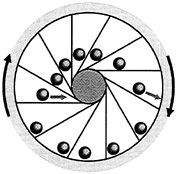
RELEVANCE OUGHT NOT BE THE SOLE CRITERION FOR DETERMINING WHICH MATHEMATICAL CONCEPTS SHOULD BE TAUGHT. EVEN CONCEPTS THAT STUDENTS MAY NEVER USE ARE STILL WORTH TEACHING.
– HYMAN BASS
As a next step, mathematics educators could decide if there is other mathematics, not required for the technical work force, that nonetheless should be part of the core curriculum. At the same time, educators and employers need to determine whether there are skills workers require that need not be taught in high school. For example, one participant noted that there are more than 500 discrete skills in carpentry, but only 200 are used by novices. Finally, educators need to decide when to teach what in a limited, thirteen-year K-12 curriculum. Perhaps the most important element in the curriculum should be teaching students how to learn, participants suggested. Recalling the metaphor of the mathematics tree, Margaret Vickers said: “Maybe we need to teach squirrels to jump.”
STUDENT NEEDS
In stressing the need for a core curriculum for all students, participants at the Workshop emphasized their desire to keep options open for all young people.
The current system, they maintained, closes options for too many youth. For many students, the way in which mathematics traditionally has been taught saps their belief in their own mathematical abilities, thereby turning them off from mathematics-oriented careers at an early age. The answer is not to make mathematics easy, but rather to make it seem worthwhile, noted Therese A. Jones, chair of the division of sciences and engineering at Amarillo College. “Football isn't easy, but people aspire to that,” she said.
In addition, today's tracking system closes off students' options by sending students down divergent paths at an early age. “If you didn't make the right choices in tenth grade, you're out for a lifetime,” said Shari Coston.
But participants warned that a system in which all students study a core curriculum risks closing options for some students, particularly those who might want to pursue advanced mathematics. If the core stretches out for too long, such students may not leave high school with the background they need to pursue higher-level mathematics, partici-
pants noted. However, they also pointed out that we do not know at what point the doors to higher mathematics may close for these young people.
One way to keep options open is to offer different students different approaches within the core. Joseph G. Rosenstein, professor of mathematics at Rutgers University, said a core program for all students need not mean the same curriculum for all. “It doesn't mean every item in the curriculum is appropriate for every student,” he said. “There are different ways for teachers to achieve the goal and for school districts to achieve the goal. ”
Similarly, Larry Rosenstock said that the provisions of the Carl D. Perkins Vocational and Applied Technology Education Act of 1990 offer another way to allow diversity and keep students' options open. That law, he pointed out, provides for broad industry-wide instruction, rather than skill-specific teaching. In learning about all aspects of an industry, a student can acquire technical skills while studying finance, planning, and labor issues. “Occupation-specific training shouldn't happen at the high school level,” Rosenstock said.
In all cases, students need the right information about the mathematics involved in careers in order to make informed choices, noted William Thomas. Now, he said, a student's choice “is based on whether he or she likes mathematics or not. There are implications for that.”
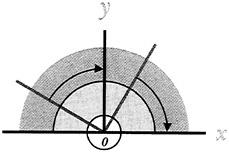
THE WAY IN WHICH MATHEMATICS TRADITIONALLY HAS BEEN TAUGHT SAPS STUDENTS ' BELIEFS IN THEIR OWN MATHEMATICAL ABILITIES. THE ANSWER IS NOT TO MAKE MATHEMATICS EASY, BUT TO MAKE IT SEEM WORTHWHILE. FOOTBALL ISN 'T EASY. BUT PEOPLE ASPIRE TO THAT.
– THERESE JONES
ARTICULATION
Achieving true reform in mathematics education will require agreement and concerted action by a broad range of stakeholders: precollegiate educators, mathematicians, technical educators, business leaders, college and university faculty, policy makers, and the public. Yet these groups do not talk with one another and do not yet agree on the goals of reform, participants said.
The mathematics education community appears to be united on the need for reform and on the approach reform ought to take. The NCTM Standards have been widely embraced, and the MSEB represents a broad constituency. Yet beneath that agreement are some differing views about implementing reform. “I've seen thousands of things that say they are based on the NCTM Standards, but don't have any relation to the Standards,” said Elizabeth J. Teles of the National Science Foundation.
At the same time, the various national standards now emerging in different subject areas offer sometimes conflicting messages to schools and teachers. To make standards effective, there needs to be better communication among advocates of various subject areas and better integration among the standards, participants said.
Participants noted that university educators establish the college-bound curriculum and give it the prestige it now claims. Community colleges and other educational institutions, they pointed out, tend to follow the universities' lead. Moreover, said David Boesel, acting director of the Department of Education's National Institute on Post-secondary Education, Libraries, and Lifelong Learning, the pressure to maintain a college path will only intensify with the current drive to
raise academic standards for students. “I don't think it's in the cards in the foreseeable future to assume that many high schools in the country will be able to develop a single or variegated academic/vocational curriculum for all students,” Boesel said.

IN LEARNING ABOUT ALL ASPECTS OF AN INDUSTRY, STUDENTS CAN ACQUIRE TECHNICAL SKILLS WHILE STUDYING FINANCE, PLANNING, AND LABOR ISSUES.
– LARRY ROSENSTOCK
One reason for his skepticism is the feeling, which many participants shared, that members of the public, particularly those with collegiate aspirations for their children, are reluctant to abandon the current system. And, mindful of past reform efforts that foundered in the wake of public opposition—particularly New Math—mathematics educators may be reluctant to undertake a new reform.
However, business and industry are potential allies for reformers. They have been effective advocates for tech-prep, but have not yet spoken out in the same way for mathematics reform, said James McKenney, director of economic development for the American Association of Community Colleges.
The most important step in advancing reform, participants agreed, is opening up dialogue among all of these groups and giving each of them the opportunity to shape the agenda. Thus far such dialogue has been rare. The MSEB Workshop represents a promising beginning, said Margaret Vickers. “As far as I know, this is the first time we have been asked to talk to each other.”








